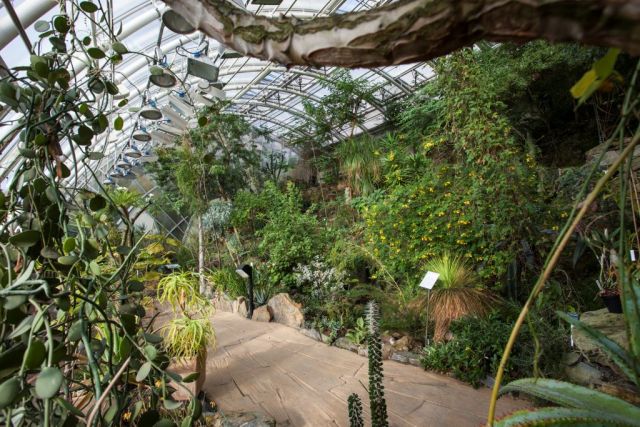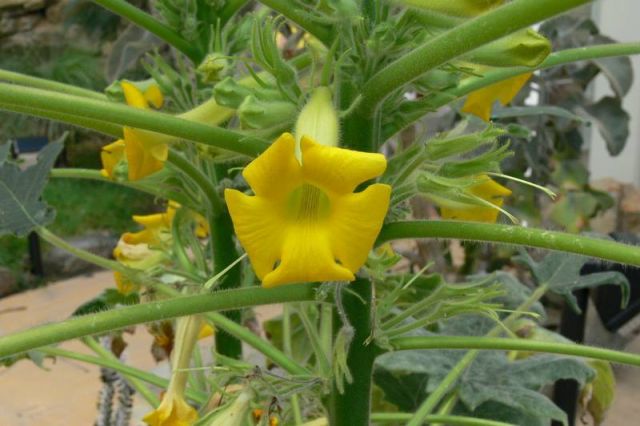Areas with minimal rainfall, like semi-deserts, steppes, and dry deciduous forests, might appear barren and unattractive when compared to the lush tropics. However, this initial impression is often misleading. A patient observer will discover numerous fascinating plants here, specifically adapted to harsh conditions such as intense sunlight, large temperature fluctuations, and prolonged drought, which can last for several years.

The overall view of the exposition
Climate adaptations vary widely and encompass different strategies that enable plant species to survive. Annual plants from these areas germinate immediately after the first heavier showers, seeds never all germinate and maintain viability for many years. Geophytes (bulbous and tuberous plants, many species of pelargoniums, and terrestrial orchids) have underground perennial organs and above-ground parts sprout only with the onset of rains. The same function is provided by caudexes, swollen formations formed by the upper part of the root and the base of the stem. They store water and form temporary, mostly non-succulent shoots.
Many drought-resistant trees, shrubs, and perennials have thick stems filled with spongy parenchymal tissue capable of storing water. Often deciduous, they feature small leaves adorned with dense hairs or a wax layer, minimizing water evaporation. Succulent plants excel in minimizing water loss by developing succulent organs—whether leaves (e.g., Crassula genus, agaves, aloes, or stonecrops) or stems (many cacti, euphorbias, Stapelia genus, among others)—that are covered with dense hairs or thorns. Their thick skin, often wax-coated and having few stomata, further aids in water retention. Additionally, many succulents can bind carbon dioxide at night (needed for photosynthesis), while during the day, closed stomata conserve additional water.
In the first succulent section of the greenhouse, you can observe xerophilous plants from three continents. The terraces on the right side are dedicated to the arid regions of Australia, while the central part of the rock showcases plants mainly from the southern Mexican states of Oaxaca and Puebla. This is followed by a smaller yet remarkable exposition of plants from Madagascar, which are also featured in narrow beds along the path. The rest of the sloping terrain represents plant communities from Africa, starting with equatorial states and ending with the South African Cape.

Blooming Uncarina grandidieri